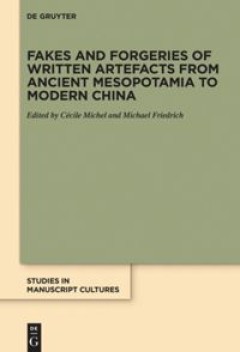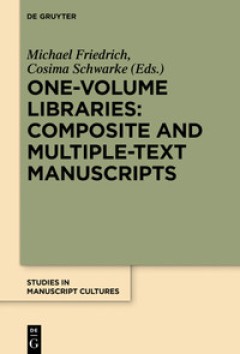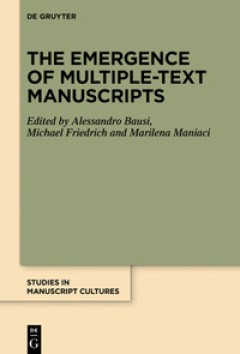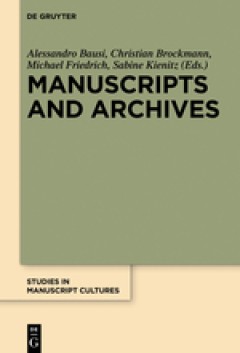Filter by

Fakes and forgeries of written artefacts from Ancient Mesopotamia to Modern C…
Fakes and forgeries are objects of fascination. This volume contains a series of thirteen articles devoted to fakes and forgeries of written artefacts from the beginnings of writing in Mesopotamia to modern China. The studies emphasise the subtle distinctions conveyed by an established vocabulary relating to the reproduction of ancient artefacts and production of artefacts claiming to be ancien…
- Edition
- -
- ISBN/ISSN
- 9783110714333
- Collation
- VI, 338 p.
- Series Title
- Volume 20 in the series Studies in Manuscript Cultures
- Call Number
- 098.3 FAK f

One-volume libraries : composite and multiple-text manuscripts
Composite and multiple-text manuscripts are traditionally studied for their individual texts, but recent trends in codicology have paved the way for a more comprehensive approach: Manuscripts are unique artefacts which reveal how they were produced and used as physical objects. While multiple-text manuscripts codicologically are to be considered as production units, i.e. they were originally pl…
- Edition
- -
- ISBN/ISSN
- 9783110496956
- Collation
- VI, 360 p.
- Series Title
- Studies in Manuscript Cultures, 9
- Call Number
- 091 ONE o

The emergence of multiple-text manuscripts
The universal practice of selecting and excerpting, summarizing and canonizing, arranging and organizing texts and visual signs, either in carefully dedicated types of manuscripts or not, is common to all manuscript cultures. Determined by intellectual or practical needs, this process is never neutral in itself. The resulting proximity and juxtaposition of previously distant contents, challenge…
- Edition
- -
- ISBN/ISSN
- 9783110645989
- Collation
- XII, 362 p.
- Series Title
- Studies in Manuscript Cultures, 17
- Call Number
- 809.93384 EME e

Manuscripts and archives : comparative views on record-keeping
The archive is traditionally considered the counterpart of the library, the one storing records, the other housing books. There is evidence, however, that this institutional division of labor reflects certain historical and social constellations. The present volume addresses the question of this complex interrelationship with case-studies from an impressive variety of ancient, traditional, and …
- Edition
- -
- ISBN/ISSN
- 9783110541397
- Collation
- XIV, 462 p
- Series Title
- -
- Call Number
- 027 MAN m
 Computer Science, Information & General Works
Computer Science, Information & General Works  Philosophy & Psychology
Philosophy & Psychology  Religion
Religion  Social Sciences
Social Sciences  Language
Language  Pure Science
Pure Science  Applied Sciences
Applied Sciences  Art & Recreation
Art & Recreation  Literature
Literature  History & Geography
History & Geography